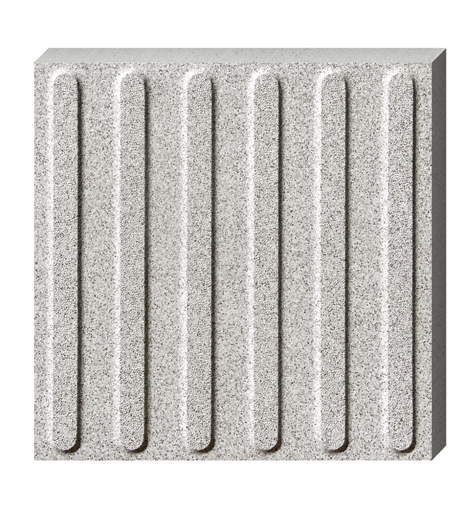|
In public places such as the streets, squares, and subway stations where we walk every day, you may have noticed those floor tiles with special textures on the ground. They are not ordinary decorations but tactile pavings that play a significant role. Today, let's take a closer look at this amazing tactile paving.

I. What is Tactile Paving
Tactile paving, also known as tactile ground surface indicators or tactile paving for the blind, is a ground guidance facility specially designed for visually impaired people and other individuals with limited mobility. It conveys information through different textures, shapes, and raised patterns, allowing users to perceive with the soles of their feet and travel safely and independently. There are two common types: one has strip-shaped raised patterns on the surface, indicating the forward direction. Blind people can walk straight along these raised patterns. The other is covered with circular raised patterns, which usually signify danger, such as intersections, the start and end points of stairs, or the edge of a platform, reminding users to stop and proceed with caution.
II. The Significance of Tactile Paving
For the visually impaired community, it is like “eyes” in the dark world. When going out without the aid of vision, every step is full of uncertainty and danger. Tactile paving provides them with a stable route guidance, enabling them to explore with a cane and confidently head to daily destinations like bus stops, supermarkets, and workplaces, greatly expanding their living space and helping them integrate into society. Meanwhile, for some elderly people with slow movements and wheelchair users, in complex public areas, tactile paving can also give early warnings of danger, preventing collisions, falls, and other accidents, ensuring their travel safety.
III. Current Situation and Problems
Currently, in the core areas of many large cities, such as bustling commercial streets and important transportation hubs, the laying of tactile pavings is relatively common. However, there are still numerous problems. The renovation of some old residential areas lags behind, and there is no tactile paving at all, making it difficult for the visually impaired elderly living there to travel. In some public places, although there is paving, the later maintenance is insufficient, with floor tiles damaged and loose, not only losing their guiding function but even becoming new “stumbling blocks”. Moreover, the public has insufficient awareness of the travel difficulties of the visually impaired group and the importance of tactile pavings. Bicycles and sundries often randomly occupy the blind paths, blocking the “green passage” for blind people.
IV. Improvements and Prospects
On the one hand, urban planners and builders should intensify their efforts. During the construction of new urban areas and the renovation of old ones, they should strictly lay and improve the tactile paving system according to standards, and integrate the concept of accessibility throughout. Regular inspections and maintenance should be carried out to ensure its intactness. On the other hand, all sectors of society should strengthen publicity. Schools, communities, and the media should popularize knowledge through multiple channels, making it a common consensus to care for special groups and protect tactile pavings. In the future, with the development of technology, perhaps intelligent tactile pavings will emerge. For example, by embedding sensing devices and interconnecting with the intelligent guide devices for the blind, more accurate and real-time navigation information can be provided to further escort the travel of special groups.
Although tactile pavings are small, they carry great warmth and are a touchstone of urban civilization. Let's join hands to pave a smooth travel road for special groups, allowing everyone to equally experience the beauty of the city.
|